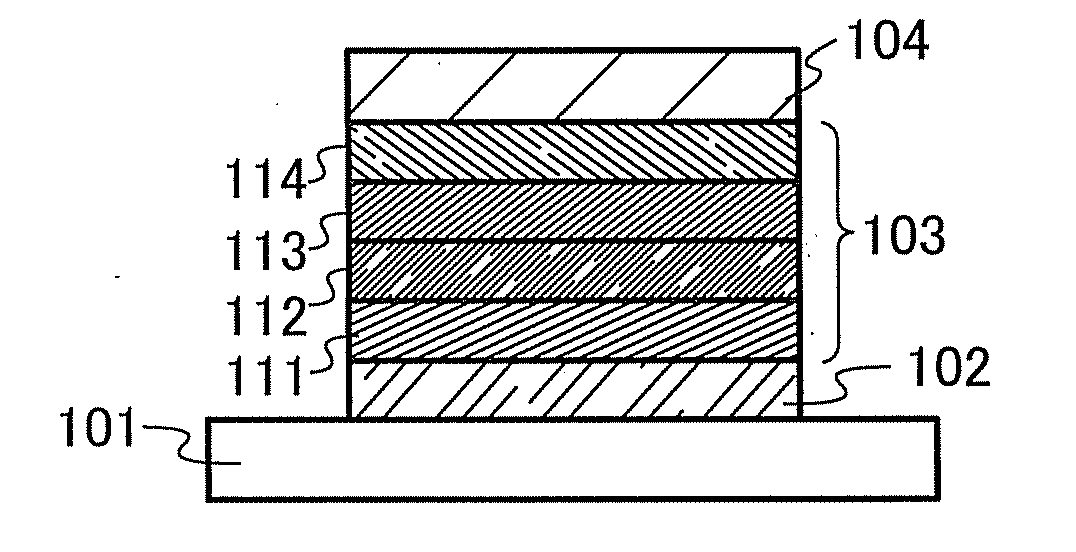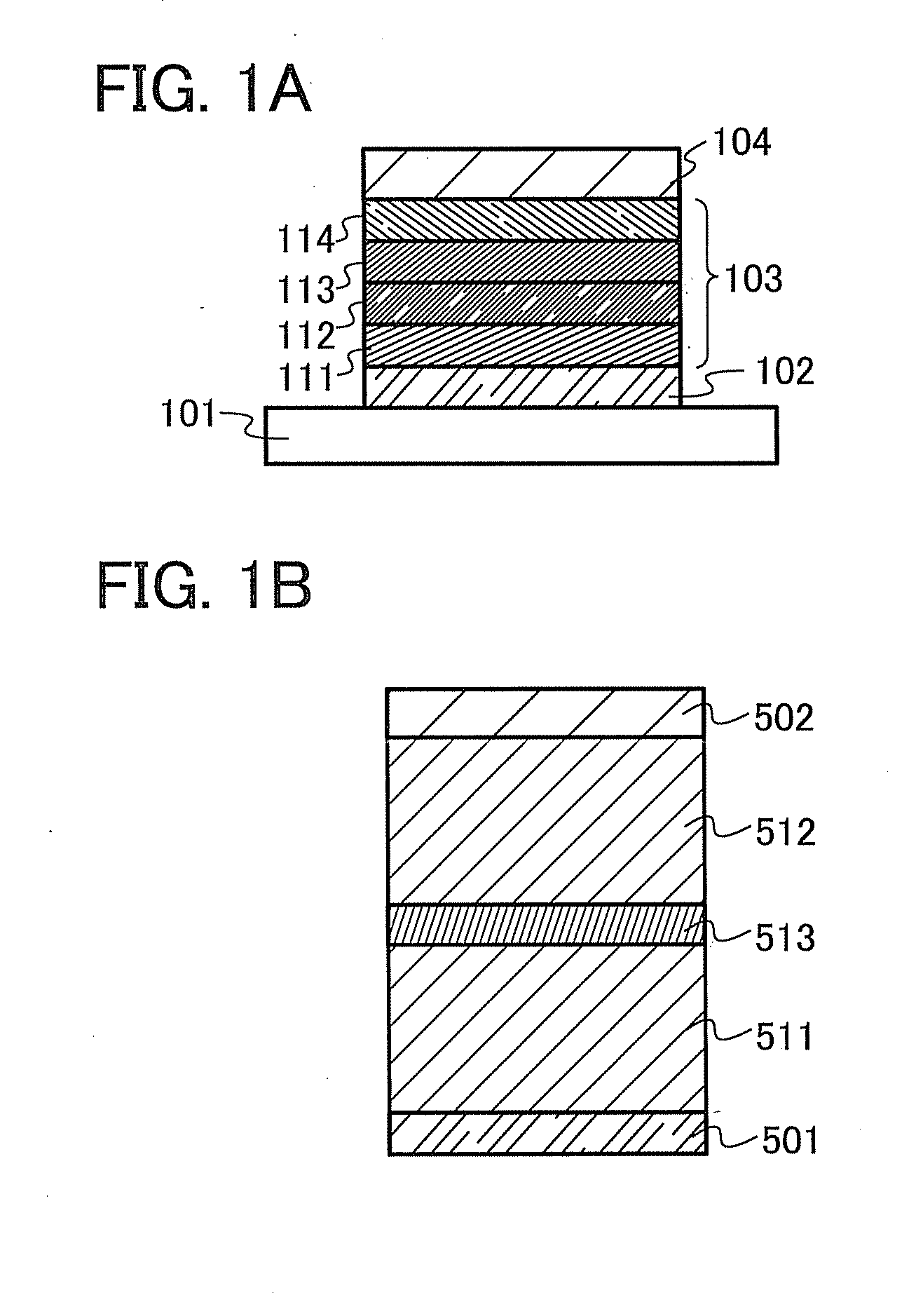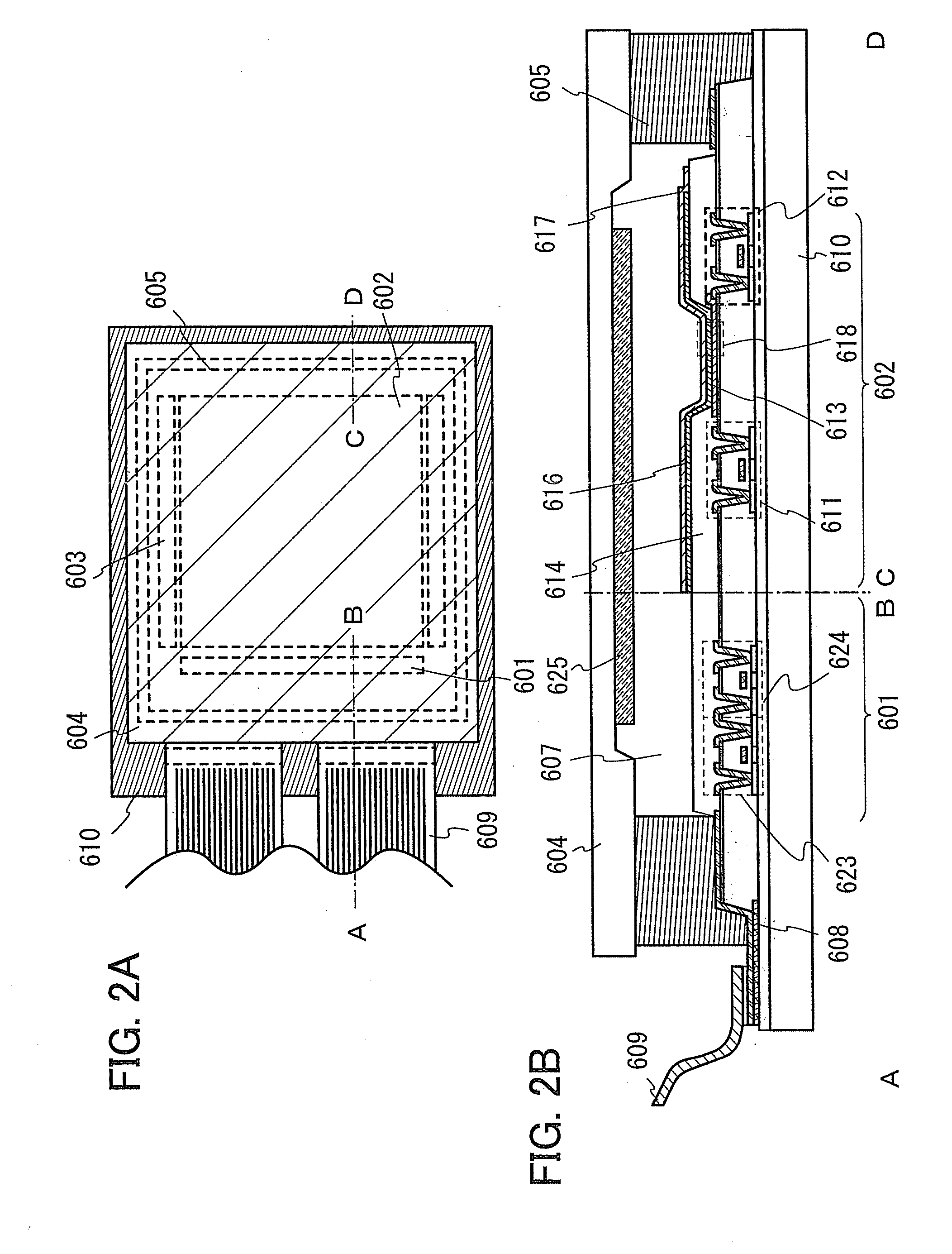Light-Emitting Element and Electronic Device
- Summary
- Abstract
- Description
- Claims
- Application Information
AI Technical Summary
Benefits of technology
Problems solved by technology
Method used
Image
Examples
embodiment 1
[0199]A light-emitting element in this embodiment is a light-emitting element including a substance having an N-carbazolyl group whose carbon atom at the 2- or 3-position of carbazole is bonded to the 4-position of a dibenzothiophene skeleton or the 4-position of a dibenzofuran skeleton. Note that the dibenzothiophene skeleton or dibenzofuran skeleton and the carbazole skeleton may or may not have a substituent.
[0200]In the case where the dibenzothiophene or dibenzofuran bonded to the N-carbazolyl group has a substituent, as the substituent, any of an aryl group having 6 to 15 carbon atoms and an alkyl group having 1 to 6 carbon atoms can be given.
[0201]In the case where the carbazole in the N-carbazolyl group has another substituent, the substitution site of the substituent is the 6- or 7-position of the carbazole, and the substituent can be any of an aryl group having 6 to 15 carbon atoms, an alkyl group having 1 to 6 carbon atoms, a dibenzothiophen-4-yl group, and a dibenzofuran-...
embodiment 2
[0251]In this embodiment, a light-emitting element having a different structure from that described in Embodiment 1 is described.
[0252]Described is a structure in which light is emitted from an emission center substance having a light-emitting property by forming a light-emitting layer 113 described in Embodiment 1 in such a way that the emission center substance having a light-emitting property is dispersed into any of the carbazole derivatives represented by the general formula (G1), i.e., a structure in which the carbazole derivative represented by the general formula (G1) is used as a host material of the light-emitting layer 113.
[0253]Each carbazole derivative represented by the general formula (G1) has a wide energy gap or high triplet excitation energy (energy difference between a ground state and a triplet excited state), and thus can make another light-emitting substance excited and emit light effectively; therefore, any of the carbazole derivatives represented by the gener...
embodiment 3
[0263]In this embodiment, an embodiment of a light-emitting element with a structure in which a plurality of light-emitting units are stacked (hereinafter this type of light-emitting element is also referred to as a stacked element) is described with reference to FIG. 1B. This light-emitting element includes a plurality of light-emitting units between a first electrode and a second electrode. Each light-emitting unit can have a structure similar to that of an EL layer 103 described in Embodiment 1 or 2. That is, a light-emitting element described in Embodiment 1 or 2 includes a single light-emitting unit; the light-emitting element in this embodiment includes a plurality of light-emitting units.
[0264]In FIG. 1B, a first light-emitting unit 511 and a second light-emitting unit 512 are stacked between a first electrode 501 and a second electrode 502, and a charge generation layer 513 is provided between the first light-emitting unit 511 and the second light-emitting unit 512. The firs...
PUM
 Login to View More
Login to View More Abstract
Description
Claims
Application Information
 Login to View More
Login to View More - R&D
- Intellectual Property
- Life Sciences
- Materials
- Tech Scout
- Unparalleled Data Quality
- Higher Quality Content
- 60% Fewer Hallucinations
Browse by: Latest US Patents, China's latest patents, Technical Efficacy Thesaurus, Application Domain, Technology Topic, Popular Technical Reports.
© 2025 PatSnap. All rights reserved.Legal|Privacy policy|Modern Slavery Act Transparency Statement|Sitemap|About US| Contact US: help@patsnap.com



